Belfast |
|
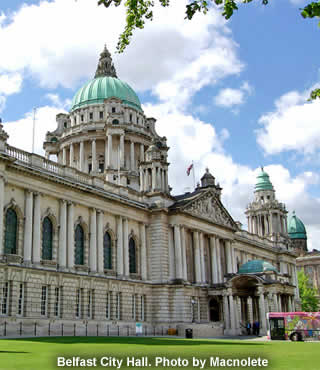 |
|||
Northern Ireland's capital: traditional and modern all at once |
|||||||||||
Listen to this article |
|||||||||||
|
|||||||||||
Belfast is the biggest settlement in Northern Ireland, and its capital city. The area has been inhabited for several thousand years, but even now its character is continuing to develop. It has been changing at a rapid rate, and now ranks as one of the British people's favourite places for short trips and weekend breaks. |
|||||||||||
 Modern Belfast Photo Northern Ireland Tourist Board |
|||||||||||
The entire city is summed up at once by the panoramic view from Cavehill, a 370 metre peak standing just next door. It's known locally as "Napoleon's Nose", as it supposedly resembles the French emperor's distinctive profile. You can get a closer look at Belfast from one of the open-topped bus tours, which zoom around all the major sights. However, a more unique way of exploring is inside a Black Taxi. Visitors are guided by a genuine local taxi driver, who tells the city's stories using all the knowledge and experience earned from decades of calling it home. |
|||||||||||
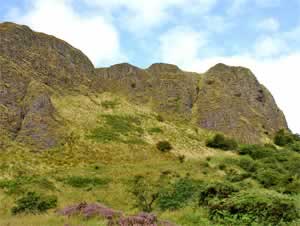 Cavehill and Napoleon's Nose Photo donnamarijne |
|||||||||||
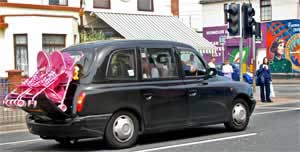 Touring Belfast by Taxi Photo Duke Human Rights Center |
|||||||||||
Whatever the mode of transport, the first destination on most tourists' lists is the City Hall, standing firmly at the dead centre of town. It was opened in 1906, and today serves as the council's headquarters. The public can peek inside via one of the daily guided tours. The green spaces surrounding the building are a popular spot with the locals, particularly when they're hosting one of the regular special events, such as the Christmas Fair. Other dates on the city's busy calendar include the weekly sales at the award-winning St. George's Market, and the cultural extravaganza of the Belfast Festival. |
|||||||||||
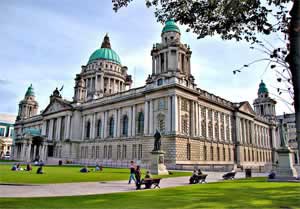 Belfast City Hall Photo RobRyb |
|||||||||||
Leading off from the City Hall is Royal Avenue, the main shopping street. The avenue ends 500 metres later, next to St. Anne's Cathedral - a landmark crowned by a 40-metre-high stainless steel spire. The surrounding area, known as the Cathedral Quarter, has become the city's cultural district, thanks to its numerous galleries and art spaces. Another place that could dispute this claim is Queen's Quarter, just to the south. It's huge university ensures a constant stream of creative young people, pouring new work into the cinemas and theatres. Both areas boast talented musicians that have either become internationally famous, or look likely to do so soon. The weird and wonderful contents of the city's concert halls are explained at the Music Exhibition, a treasure trove of antique guitars and old gig posters. |
|||||||||||
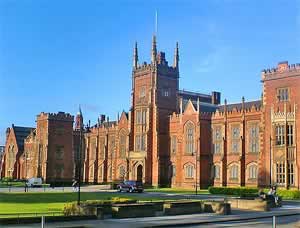 Queens University Photo in the Public Domain |
|||||||||||
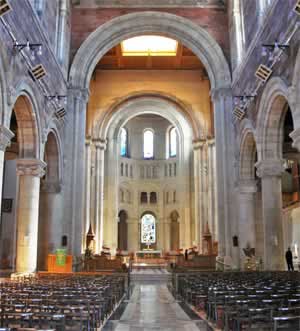 Inside St Anne's Cathedral Photo rebekah.grmela |
|||||||||||
|
|||||||||||
Belfast's other two Quarters are Gaeltacht, where the ancient Irish language and traditions are alive and well, and Titanic, on the waterfront. It takes its name from the early 20th century cruise liner, whose sad story is known all around the world. The tale begins here, at the Harland and Wolff Shipyard, where the Titanic was put together. This was once the largest and most productive seaport in the world, and today remains a major hub for both commercial and leisure craft. The area has changed dramatically in recent years, with a multi-million pound transformation into a shiny, modern retail palace. |
|||||||||||
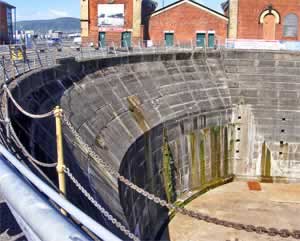 Titanic Dock in the Titanic Quarter. Photo rebekah.grmela |
|||||||||||
|
|||||||||||
The Gaeltacht Quarter is an area where Irish language and culture has flourished since the 1960s. It also boasts an altogether different type of artistic endeavour – home to some of the city’s descriptive wall murals, listed as the UK’s Best Tourist Attraction by the Independent newspaper, 2007. |
|||||||||||
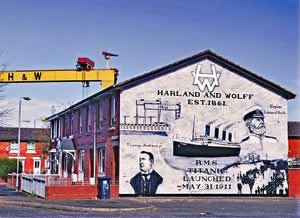 One of Belfast's wall murals Photo Northern Ireland Tourist Board |
|||||||||||
Despite its size, so much of Belfast is being renovated and renewed that a visit here is sure to surprise you. In a very short time the city has become one of the foremost cultural and financial centres in Europe - and its star is set to carry on rising. |
|||||||||||
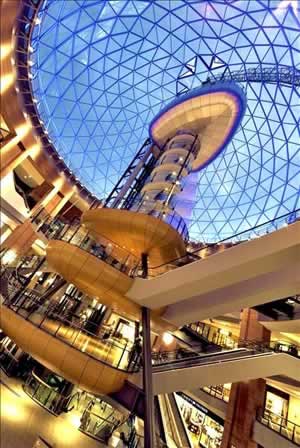 Shopping at the modern Victoria Square Shopping Centre. Photo Northen Ireland Tourist Board |
|||||||||||
|
|||||||||||
Belfast Tourist Information Centre, 47 Donegall Place, BT1 5AD. Tel: 028 9024 6609 |
|||||||||||
Belfast City Hall is open Monday to Saturday, 9am to 5pm. The building is a working council building, so entry is FREE. Guided Tours take place 11am, 2pm & 3pm. The Bobbin Coffee Shop is open 9am to 4pm. Belfast City Hall, Belfast, BT1 5GS. Tel: 028 9027 0456 |
|||||||||||
St Anne's Cathedral is open to visitors on weekdays, 10am to 4pm. Belfast Cathedral, Donegall Street, Belfast BT1 2HB. |
|||||||||||
The Lagan Boat Company offer Titanic Boat Tours called "She was alright when she left here!!". Boats leave daily from the Big Fish at 12.30pm, 2pm and 3.30pm, April to September (plus limited tours in winter). Tickets cost around £10 for adults, £8 children. Tel: 028 9033 0844 |
|||||||||||
Victoria Square Shopping Centre is open daily 9.30am to 6pm (to 9pm Wednesday to Friday and from 1pm on Sundays). 1 Victoria Square, Belfast, Co. Antrim, BT1 4QG. Tel: 028 90 32 22 77 |
|||||||||||
|
Pocket Britain is optimised for use on a smartphone or tablet with internet access. All content is subject to copyright. All reasonable methods have been used to ensure information supplied is accurate at the time of publication. However, it is advisable to check information before relying on it. Privacy Policy |